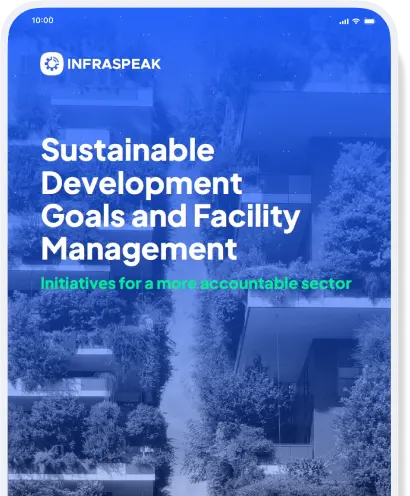While water is a vital resource in nearly every industry, its role in supply chains is often overlooked. For facilities managers, understanding water usage throughout the supply chain is essential to creating sustainable and efficient operations. From raw material extraction to product delivery, water plays an integral part in producing goods.
However, with our global water supply only becoming more scarce, facility managers must now prioritise optimising water usage and reducing inefficiencies in order to maintain sustainable operations and build a more planet-friendly future.
Many of us are used to limiting our water consumption at home, but how does this translate to large organisations with so many moving parts to consider? In this article, we examine exactly how water is used in supply chains, highlight critical considerations, and share actionable steps you can take to improve water efficiency while you’re at work.
Water use in production processes
The production phase of the supply chain is often the most water-intensive, with many industries relying heavily on water for irrigation, cleaning, cooling, or as a raw material.
Facilities managers can benefit from evaluating their facilities’ water footprint to identify areas of high consumption. With the help of monitoring systems and audits, you can track your water usage and gain detailed insights into how you can implement conservation strategies. Similarly, investing in water-efficient technologies, such as closed-loop systems or wastewater recycling, can drastically reduce water usage at your facility.
Hidden water in the supply chain
Beyond the direct water use that’s easy for us to recognise, there is often a significant amount of “hidden” water consumption embedded into various supply chain processes, which is known as virtual water. This includes the water required to produce raw materials and components sourced from suppliers.
Understanding this virtual water usage in depth is critical to assessing the total water impact of your facility’s operations. By collaborating with suppliers, you can improve your water management practices and strategically address any inefficiencies.
Sourcing materials and components from regions with lower water stress can also mitigate the environmental impact of your operations, and enhance the resilience of the supply chain as a whole.

Risk management and future-proofing
As water is so essential to supply chain operations, the scarcity of it can pose a significant risk. Disruptions caused by droughts, water restrictions, and climate change can impact production timelines, increase costs, and affect product availability. Therefore, it’s crucial to consider these risks when planning and managing supply chain strategies at your facility.
Implementing robust risk management systems and adopting sustainable water practices is not only environmentally responsible, but also vital for your operations — so they stay viable in the long term. By partnering with sustainability-focused organisations, participating in water stewardship initiatives, and recognising the impact of global water issues, you can make a significant difference while mitigating risks to your own production line.
Take actionable steps towards a sustainable future
Water is a finite resource, and its responsible management is becoming increasingly important across all industries. As a facility manager, you play a pivotal role in monitoring and optimising water usage, both within your operations and throughout the wider supply chain.
By addressing water consumption in production processes, uncovering hidden water usage, and creating robust risk management strategies, organisations can create more sustainable and resilient supply chains. Now is the time to evaluate your supply chain’s water footprint and take actionable steps towards a more sustainable future.
